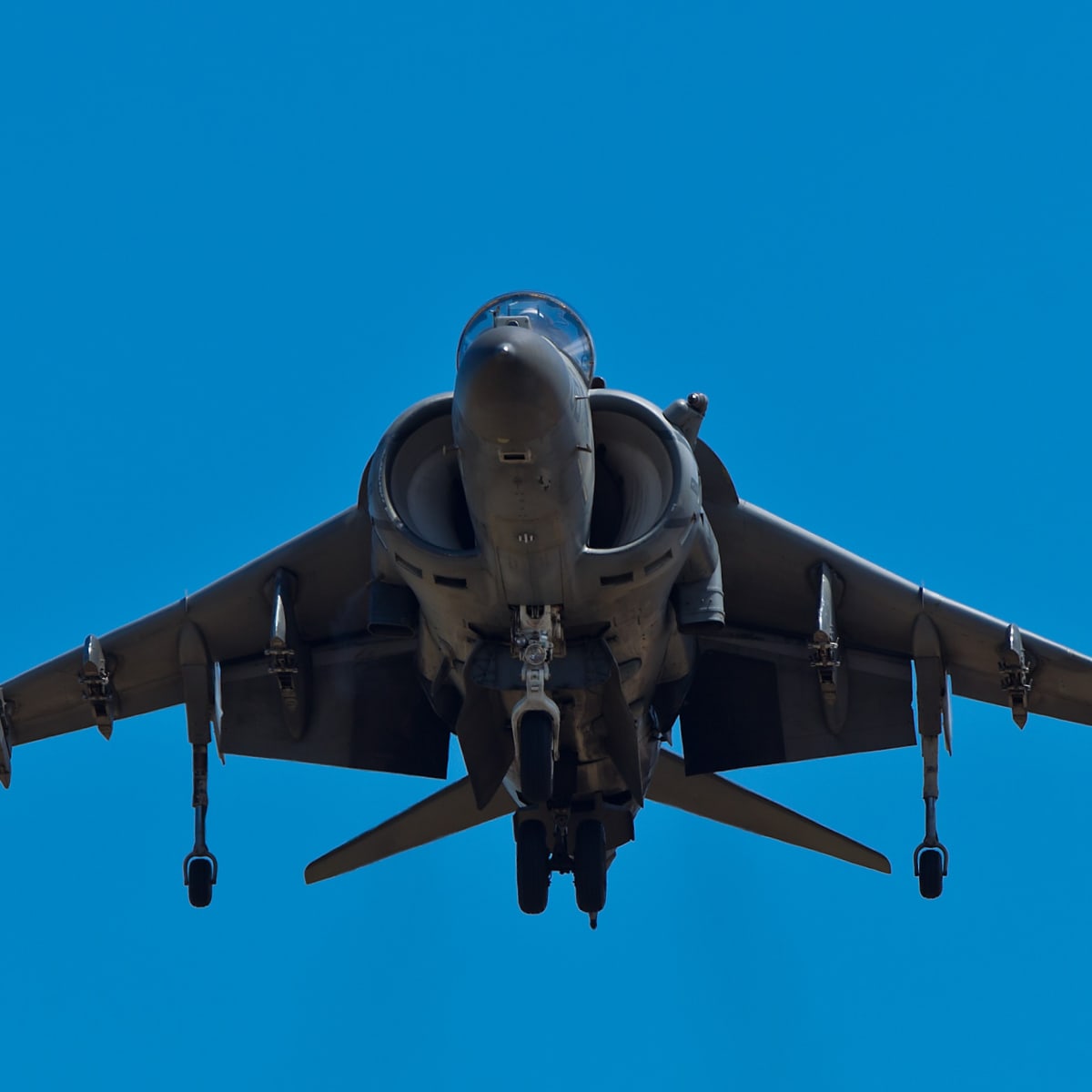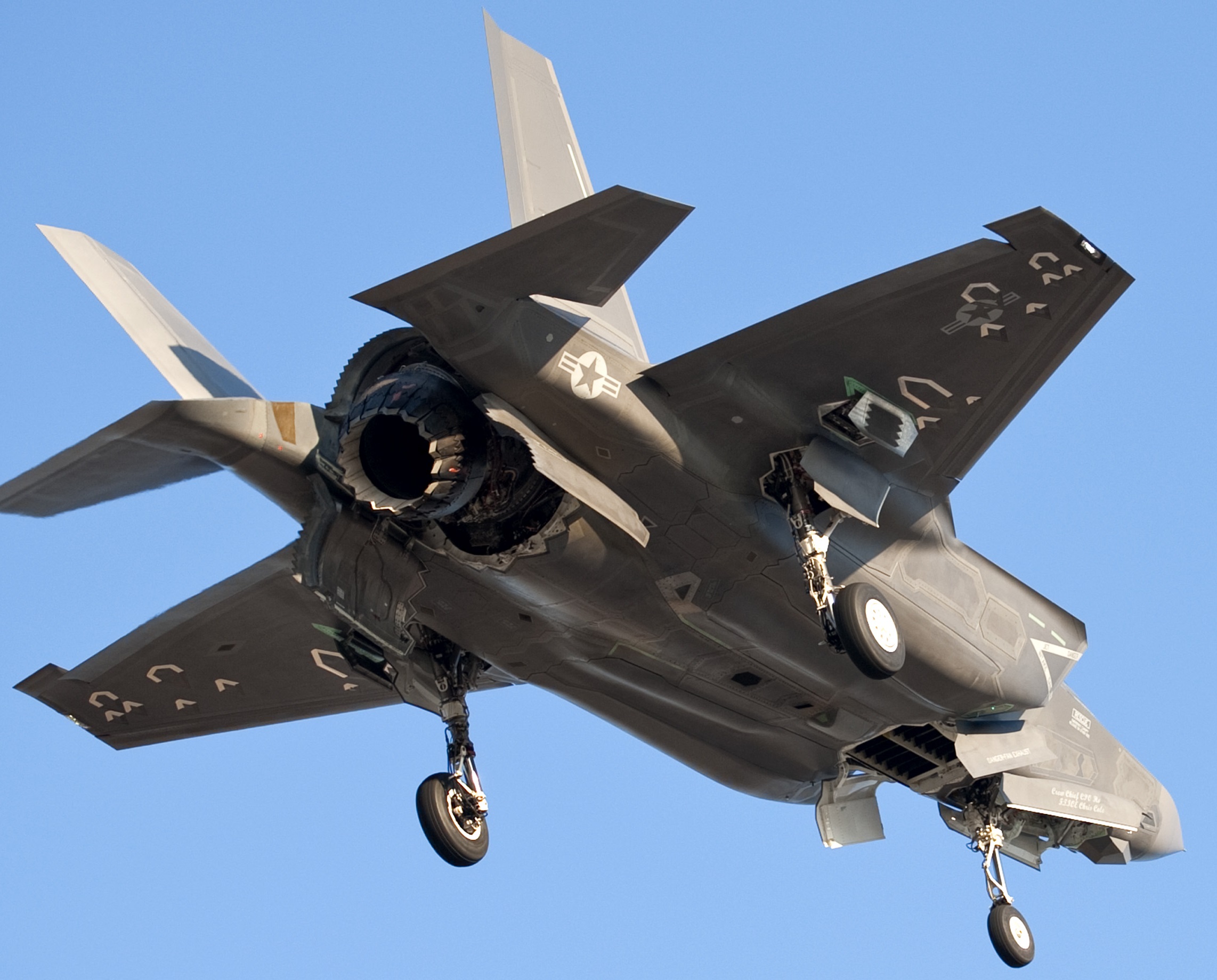Hovering Fighter Jet - For decades, engineers have tried to combine the best features of helicopters and airplanes to create an aircraft that can fly in the sky. As a result, many different types of vertical takeoffs and landings have been developed, some more successful than others.
Both airplanes and helicopters have impressive capabilities, but, at least in some cases, they are unique. In addition to hovering, helicopters are capable of vertical takeoff and landing (VTOL). This means they can work almost anywhere, regardless of airports. Airplanes can't do that because they need runways. But they can carry more cargo and fly faster than any helicopter.
Hovering Fighter Jet

Isn't it good to combine the capabilities of these two types of aircraft? The idea is not new. Aeronautical engineers have worked on the problem since at least the 1950s. So far, only a few planes have pulled it off.
Us F 22 Fighter Jets To Soon Hover Over The Pacific Amid Mounting Tensions With China
Let's take a look at what it takes to lift an airplane vertically off the ground and into the air. So far, only four planes have made the cut, and each has solved a different engineering problem.
Engineering to make an airplane fly is actually very difficult. Airplanes, by definition, need airflow through their rigid wings to lift. When an airplane flies, it has no forward speed and therefore its wings cannot produce lift.
So how do you get a bird in the sky? Designers and manufacturers have been trying different methods for decades.
A helicopter is an obvious solution. It is a tried and true technology that enables vertical take-off and landing (VTOL) and aerial navigation. Helicopters achieve this by generating lift using rotating rotors instead of fixed wings.
Video: Magnificent Fighter Jets F 35 And Harrier Jump Jet Demonstrate Vertical Takeoff And Landing
But there are many disadvantages of helicopters. They cannot carry much weight and cannot fly very fast. In fact, modern helicopters are limited to a top speed of around 200 knots, less than what is needed for a fighter/interceptor.
So aerospace designers have a challenge on their hands - how can they create an aircraft with the capability and speed of a modern fighter, but one that can take off and land vertically?
This is an important challenge because the ability to control the aircraft from anywhere opens up more possible operations.

It should be noted that some of the aircraft on this list do not have the ability to take off and land vertically in all conditions.
Go Ahead, China—copy Our Crappiest Warplane
Several methods have been tried to find a plane (or at least a plane-like plane) in the sky. The idea is basic - you use engine power to descend vertically, and when you're at a safe altitude, you switch to using the engine for thrust and the wings for lift. It allows you to fly at the speed of an airplane during flight, but also to make vertical flights and landings.
Ryan Aircraft tested something called a "tail-wing". This plane sat upright on the tarmac, and the pilot sat pointing it into the sky like a rocket before take off. Ryan is gone, and so are the sitters.
The best way to achieve vertical lift was to direct the exhaust and engine pressure in a controlled manner. If the engine is running at full power and giving more thrust than the weight of the fully loaded aircraft, this should be enough power to lift it off the ground.
The problem with this approach is that it is expensive to build and difficult to fly. But other successful jet-flying designs have worked very well.
Can Planes Hover? (small Vs. Commercial Vs Military Planes)
The modern version of the magazine is a jet plane with vertical lift fans. Combined with the exhaust, this can provide the lift needed to get off the ground in a somewhat streamlined manner.
Finally, there are designs designed for the entire engine to rotate. For takeoff and landing, the engines are vertical. With constant running, the engine turns to a horizontal position.
The Harrier family of aircraft is known as the Jump Jet. It's easy to downplay the importance of the Harrier on this list. If it weren't for the Harrier, that list wouldn't exist at all. Of all the wacky and crazy ideas the engineers came up with, the Harrier stuck.

The Harrier first entered service in 1969 and is still used by some operators today. The US Navy uses them like everyone else. But its main users, the British Air Force and the Royal Navy, have retired their old Harrier fleet.
Lockheed Martin F 35 Lightning Ii Hovering Stock Photo
For all their impressive figures, the Harrier design is now dated. They are subject to extraordinary wear and tear throughout their lifetime, requiring extensive maintenance and high operating costs. It was also difficult for pilots to fly.
Hawker Siddeley and British Astronauts created the first generation Harriers. The aircraft was known as the AV-8A Harrier and was operated by the Royal Air Force and the United States Navy. The Sea Harrier was a derivative version designed for use by the Royal Navy and the Indian Navy.
In the 1980s, the second generation Harrier was built in the USA by the McDonnell Douglas AV-8B. When Boeing bought McDonnell Douglas, Hawker came under the company's umbrella.
In operation, the Harrier uses a single Rolls-Royce turbine engine with four vectored nozzles that can move independently from horizontal to slightly forward (98 degrees) from vertical. Being able to rotate the tubes slightly forward means that the Harrier can slide backwards while hovering.
Raf Royal Air Force Bae Harrier Gr9 Jump Jet Fighter Plane Hovering, Flying At An Airshow. Lightning Bolt Tail Scheme. Hover. Space For Copy Stock Photo
Over four decades of service, 824 Harriers were delivered, making it the most popular and successful aircraft to ever fly.
Another way to get the plane off the ground vertically is to move the entire engine. The best example of this method is the V-22 Osprey tiltrotor. It's not a plane, but it's not a helicopter either.
Although many other aircraft are planned, the Osprey is the world's first operational tiltrotor aircraft. The FAA created a new "power lift" aircraft unit, hoping that the technology would one day be used for civilian operations.

The Osprey program, which first flew in 1989, was plagued by such engineering and design problems that the aircraft did not enter operational service until 2007. The design exhibits the VTOL performance of a helicopter, but maintains a dynamic flight speed of turboprop.
Cost Of F 35 Strike Fighter Jet Skyrockets
About 400 aircraft have now been delivered and are operated by the US Navy, Air Force and Marines. The Japan Ground Self-Defense Force also operates a fleet of aircraft. The US Navy currently plans to use the CMV-22B variant for carrier operations. India, Indonesia and Israel are also interested in the V-22.
The Osprey's range is about 900 nautical miles and they can operate at about 300 knots. The rear ramp can be opened to raise and lower while in flight.
The latest generation of titrotor is the Bell V-280 Valor, which is still under development. This version is intended to replace a fleet of attack helicopters for the US military.
The Soviets' attempt to compete with the Harrier aircraft was the Yakovlev Yak-38. It first flew in 1971 and entered service in 1976, but was later retired. It was the predecessor of the more capable Yak-41, a very good design that was canceled due to bad timing.
Hawker Siddeley Harrier
The Yak-38 was used by the Soviet Navy on the Kyiv-class aircraft carriers. They built 231 of them and used them until 1991.
Although the design of the Yak-38 was similar to the Harrier, the theory of operation of the aircraft was very different. While the Harrier used one engine with four separate thrust ports, the Yak uses one large main engine and two smaller vertically mounted engines for takeoff and landing.
America's newest fighter jet, the Joint Strike Fighter, was developed in the STOVL variant. The F-35B has a single turbine engine with a vectored nose and a driven fan that provides lift for takeoff and landing.

Much of the technology that went into the F-35B V/STOL system came from a partnership between Lockheed Corporation and Yakovlev. The systems that went into the Yak-141 led to the F-35B, a test aircraft that would eventually become the canceled Yak-41.
Lockheed Martin F 35b Lightning Ii Hovering At Sunset, At Raf Marham In Norfolk, England Stock Photo
Many former retired Harrier operators have begun to transition to the F-35B. Unlike its predecessors, the F-35B is the first super-powered VTOL aircraft.
The F-35 program is named the Joint Strike Fighter because there is a version for each service branch tailored to each branch's needs. Only the F-35B is V/STOL capable. In a new video, Lockheed Martin's supersonic F-35B shows how it can burn a lot of precious fuel without going anywhere.
In a new video, Lockheed Martin's supersonic F-35B Lightning II jet shows how it can burn a lot of precious jet fuel without going anywhere.
The $83 million aircraft, officially the BF-1, recently performed this task at Naval Air Station Patuxent River, Maryland.
Moment F 35 Pilot Ejects After Crash Landing In Fighter Jet
Watch test pilot Graham Tomlinson hover 150 feet above the runway in an F-35B in this video:
So how does it work? Inside the jet is a vertical fan driven by a shaft from the engine. The
Second degree assault washington state, 2nd degree assault sentence, 2nd degree aggravated assault, 2nd degree assault mn, 2nd degree assault, 2nd degree assault definition, 3rd degree assault washington state, 4th degree assault washington state, 2nd degree felony assault, 4th degree assault washington, what is assault 2nd degree, 2nd degree assault charges